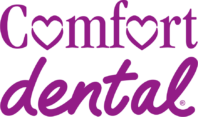Taking Care of Your Teeth at Home
A clean, healthy smile starts at home — but brushing alone isn’t enough to keep your teeth and gums in top shape. While brushing is an essential part of your daily oral hygiene routine, it’s just one piece of a larger puzzle. To truly maintain strong teeth and healthy gums, it’s important to understand how other habits support and enhance the work of brushing.
Most of us learn how to brush as young children, and over time, it becomes second nature. But brushing alone can only do so much. Your toothbrush can’t always reach into the tight spaces between teeth or eliminate the sticky plaque that builds up along the gumline. That’s why brushing, although vital, should be supported with other good habits like flossing, using mouthwash, eating a balanced diet, and visiting the dentist regularly.
What Brushing Can (and Can’t) Do
Brushing your teeth at least twice a day removes food particles, reduces plaque buildup, and freshens your breath. A fluoride toothpaste also helps strengthen tooth enamel and guard against decay. But your toothbrush can only clean about 60% of the surface area of your teeth.
Plaque and bacteria tend to hide in the spaces between teeth and beneath the gumline — places your toothbrush can’t easily reach. That’s where flossing and other home care practices come into play. A good oral hygiene routine combines brushing with other effective habits to cover all bases and keep your mouth truly clean.
Flossing Complements Brushing
If brushing is the star of the show, flossing is its indispensable sidekick. Dental floss helps clean between the teeth and below the gumline where your toothbrush can’t reach. It’s one of the most effective ways to prevent cavities and gum disease in those hard-to-clean areas.
Some people skip flossing because it feels inconvenient or unnecessary, but the difference it makes is significant. Flossing once a day removes plaque before it can harden into tartar and cause inflammation or infection. Combined with regular brushing, flossing is one of the simplest ways to boost your oral health.
Other Habits That Enhance Your Oral Routine
Your brushing routine should be part of a broader strategy that includes smart choices in diet and hygiene. Here are a few more key habits to include:
- Use mouthwash: An antibacterial rinse can help reduce plaque and freshen breath, reaching areas your brush might miss.
- Chew sugar-free gum: Chewing gum after meals stimulates saliva production, which helps neutralize acids and wash away food particles.
- Avoid sugary snacks and drinks: Sugar feeds bacteria in your mouth, which can lead to decay even if you brush regularly.
- Drink water throughout the day: Staying hydrated helps rinse away food and keep your mouth’s pH in balance.
Each of these habits supports brushing and contributes to a healthy mouth. No single technique does it all — success comes from consistency and variety in your approach.
The Importance of Routine Dental Visits
Even if you’re brushing and flossing daily, you still need to see a dentist. Professional cleanings remove hardened tartar that can’t be brushed away, and dental exams help detect early signs of decay or gum disease. These visits also give you a chance to ask questions and make sure your brushing technique is effective.
Dentists and dental hygienists often catch problems that patients don’t notice at home. By visiting the dentist twice a year, you’re not only protecting your smile; you’re investing in your long-term health.
Tips for Improving Your Brushing Technique
Brushing may seem simple, but doing it correctly makes a big difference. Here are a few reminders to help you get the most out of your brushing routine:
- Use a soft-bristled toothbrush: Hard bristles can damage your gums and enamel.
- Brush for two full minutes: Divide your mouth into quadrants and spend 30 seconds on each.
- Use gentle, circular motions: Don’t scrub too hard, as this can wear down enamel and irritate your gums.
- Replace your toothbrush every 3–4 months: Worn bristles aren’t as effective at cleaning your teeth.
- Brush your tongue: This helps eliminate bacteria that cause bad breath and supports overall oral hygiene.
Following these simple tips can make your brushing routine more effective and help you prevent cavities and gum disease over time.
Children and Brushing Habits
Teaching children to brush properly sets the foundation for a lifetime of good oral health. Kids often need help brushing until they develop the dexterity to do it effectively on their own, usually around age eight. Supervising their brushing and making it part of a consistent morning and bedtime routine can help build strong habits.
It’s also important to choose age-appropriate toothbrushes and toothpaste. Some children may benefit from flavored toothpaste or fun timers to keep them engaged. And just like adults, kids need regular dental checkups to make sure their teeth are developing correctly.
Consistency Is the Key
It’s not just what you do, it’s how often you do it. Brushing every day (especially before bed), flossing daily, and keeping up with regular dental appointments all work together to protect your teeth. Skipping even one element of this routine increases your risk of cavities, gum disease, and bad breath.
Remember, brushing is the foundation of a good home dental routine, but it’s most effective when supported by healthy habits and regular care from your dentist. A few minutes each day can prevent bigger problems later on.
